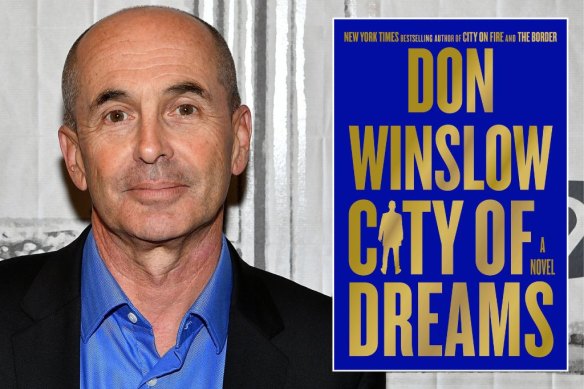Hollywood, drugs and gang wars: This is crime fiction of the highest order

Save articles for later
Add articles to your saved list and come back to them any time.
Much contemporary crime fiction works on a small scale: a focus on interior lives, claustrophobic domestic settings, the evil that you didn’t know existed next door, in the next room, next to you in bed. This has never been Don Winslow’s style. His books deal typically in large intricate plots with multiple moving parts and sweeping geographical and contemporary historical vistas. His latest, City of Dreams, is no exception.
It is the second instalment in an urban gangster trilogy and begins with Irish gangster Danny Ryan having just emerged on the losing side of a battle with the Italian Mafia for criminal control of Providence, a city on the north-east coast of America. Leaving behind a trail of corpses, including a corrupt federal agent, Ryan flees to California with the remains of his gang, his 18-month-old son, and his senile alcoholic father.
Don Winslow’s books serve as an alternative crime history of America from the 1990s onwards.Credit: Getty Images
Desperate for money to fund a new start, he makes a deal with the Drug Enforcement Agency to undertake a covert operation against a Mexican drug dealer. Next stop Hollywood, to pull into line two of his former gang members who are extorting the makers of a new feature film about the very New England crime war from which he has escaped. But with time on his hands and money behind him, Ryan starts to think the movie business could be his next career move.
Themes in this book have been extensively interrogated elsewhere in crime fiction: the remnants of two once-powerful criminal traditions fighting it out for control in a rapidly changing economic and social landscape; a reluctant but talented criminal who wants to go legitimate; a major score that could set him and his crew up for life, but which comes with enormous risk. While in the background an even more ruthless entity is gaining power – Mexico’s drug traffickers. There’s betrayal and greed at every turn and a fair amount of violence, all masterfully managed by Winslow.
City of Dreams has one setting I have not seen Winslow tackle before, Hollywood, a place where, as he writes, “the film industry and the criminal class intersect”. And he seems to have had a good time doing so, no doubt keen to parlay his exposure to the film business into his work. Winslow’s book Savages was made into a 2012 film by Oliver Stone and his 2017 New York cop novel The Force is soon to be a major motion picture.
It has become a cliche to say Winslow is a crime writer working at the very top of his game. But that doesn’t make it any less true. Over more than 20 books, Winslow has worked his way up from more modest and contained crime stories to sprawling sagas. In the process, he has honed his style like a patient man sharpening a knife on a whetstone. His writing has acquired a fluid, almost effortless feel, imparting complex backstory, nuanced but brief character descriptions and dramatic settings with a minimum of words.
In City of Dreams, Winslow once again takes a large cast of characters, anchored by Ryan, and multiple related plot strands, and manoeuvres them at breakneck speed across various points in time, without ever losing control over the pace and narrative.
The other aspect of Winslow’s work that stands out is how his books function as a detailed alternative crime history of America from the 1990s onwards. City of Dreams confirms Winslow as the rarest of literary creatures: a skilled crime writer who can combine stories that are almost hardboiled in style and sensibility, with a sophisticated analysis of the fault lines of post-imperial United States, its shifting criminal clans and fraught relationship with its southern neighbours.
City of Dreams by Don Winslow is published by HarperCollins, $32.99.
The Booklist is a weekly newsletter for book lovers from books editor Jason Steger. Get it delivered every Friday.
Most Viewed in Culture
From our partners
Source: Read Full Article
